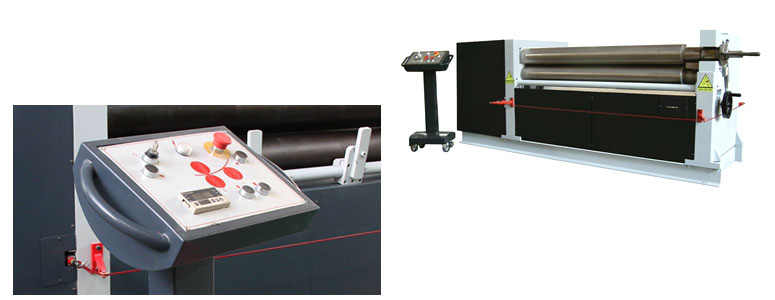The 9 advantages of CNC roll bending machines
Roll benders (sometimes called coilers) are forming tools that provide a simple solution for continuous point roll bending of sheet metal. Here are 9 key advantages of using a CNC roll bending machine.
Top 9 advantages of CNC roll bending machines
1. 16-segment speed control
2. Simple programmable logic controller (PLC)
3. Tailor-made to your needs
4. Heat dissipation
5. Modular circuitry
6. Powerful input and output
7. Unique adaptive control features
8. Built with advanced PID algorithms
9. Attractive design
They can easily bend sheet metal into round, curved and tapered workpieces, and offer a wide range of forming options. The most common shapes are round, U-shaped and multi-section R-bends, but specialized machines can offer triangular and even elliptical roll bending as well as many other options.
In addition, as an improvement over standard roll roll bending machines, computer numerical control (CNC) roll bending machines will provide reliable, repeatable results when programmed. This can free up labor space and reduce overhead costs in the long run.

As a result, roll roll bending machines can be very useful for metalworking companies seeking to optimize production. If you are still unsure; here are the 9 main advantages of using a CNC roll bending machine
1. CNC roll bending machine 16-segment speed control
Facilitating a variety of speeds allows these sheet metal benders to work with many different metals under different working conditions. The ability to program these into the CNC system means you can easily create specific programs to work with specific metals, thicknesses, shapes and material quantities.
2. Simple Programmable Logic Controller (PLC)
In line with the incredible speed control, the simple PLC allows pre-programming for a variety of different tasks. In addition to speed, this allows you to change time, direction, shape and more specific factors as you see fit. Once programmed, these different functions can be easily operated by even low-skilled workers, resulting in cost savings.
3. Tailored to your needs
With a variety of optional features, CNC coilers can be tailored to your exact needs. The most common of these optional features are PG vector control, torque control and V/F control.
4. Heat dissipation
These machines are designed to handle heat-intensive roll bending jobs and are designed with separate air ducts for easy heat dissipation. In addition, the fans can be freely removed for maintenance, replacement or other purposes.
5. Modular Circuitry
The modular design of the circuitry ensures stable and efficient operation. But, more importantly, it makes it easier to identify and solve internal problems if they do arise.
6. Powerful input and output
With the ability to program a wide range of functions, the reel provides an incredible range of potential inputs and outputs in a single bundle.
Depending on your model, this can help reduce the need for multiple machines performing similar tasks.
7. Unique Adaptive Control Features
Thanks to the powerful CNC capabilities of the coil bender, the metal coil bender offers an automatically assigned motor torque limit.
This helps prevent frequent circuit trips, which are most often caused by exceeding torque thresholds.
8. Built with advanced PID algorithms
Another advantage of the CNC design is the very advanced PID algorithm. This helps to effectively regulate temperature, flow, pressure, speed and other variables to ensure the longevity of the machine.
These CNC sheet metal roll bending machines are built with advanced algorithms that are responsive, adaptable and easy to commission when problems arise.
9. Beautiful design of roll bending machines
In addition to the incredible features, modern CNC steel coil roll bending machines incorporate many European design concepts.
This ensures that the machine's body maintains smooth lines, attractive colors and an overall appealing appearance.
评论
发表评论